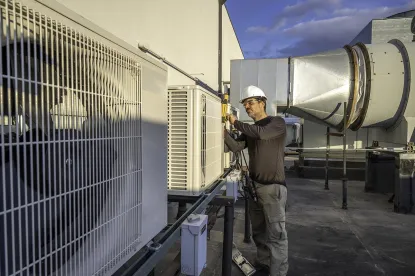In June, the California Occupational Safety and Health Standards Board – unanimously adopted a new standard for Heat Illness Prevention in Indoor Places of Employment. The standard applies to all indoor work areas where the temperature equals or exceeds 82 degrees Fahrenheit.
At the time of its passage, it was unclear when the new standard would become effective, but the Standards Board had requested the Office of Administrative Law to expedite the regulation. Without any fanfare, Cal/OSHA indicated on its Frequently Asked Questions page that the standard took effect July 23, 2024.
The FAQ page covers 24 questions, from the basics of when the regulation applies, to more technical issues such as acceptable ways to measure the indoor temperature.
Some of the highlights are the FAQs are as follows:
- Sufficient Access to Drinking Water: The FAQs specify that sufficient access means that water must be located as close as possible to areas where the workers are working and in indoor cool-down areas. It may require placing water strategically in multiple locations.
- Emergency Response Procedures: The FAQs state that any worker must be allowed to call for emergency medical services when necessary. Moreover, employers must have specific procedures to ensure that supervisors and workers are trained to recognize the symptoms of heat illness, provide basic first aid such as cooling towels, and obtain medical services.
- Evaluation of Training Programs: The FAQs state that Cal/OSHA evaluates training compliance by examining both content and how it is presented. To be considered effective, the training must be given in a language and at an educational level the workers understand. The FAQs also state several required topics:
- Environmental and personal risk factors for heat illness.
- The employer’s procedures for complying with this regulation.
- The importance of frequent water consumption.
- The importance and methods of acclimatization.
- Signs and symptoms of the different types of heat illness.
- The importance of workers immediately reporting to the employer signs and symptoms of heat illness in themselves or co-workers.
- The employer’s procedures for responding to signs and symptoms of heat illness, such as first aid.
- Emergency response procedures, including contacting emergency medical services with clear directions to the worksite.
- Prior to supervising workers, the supervisor must be trained in all of the information listed above and how to monitor and respond to hot weather reports, if the work area is affected by outdoor temperatures.





 />i
/>i

